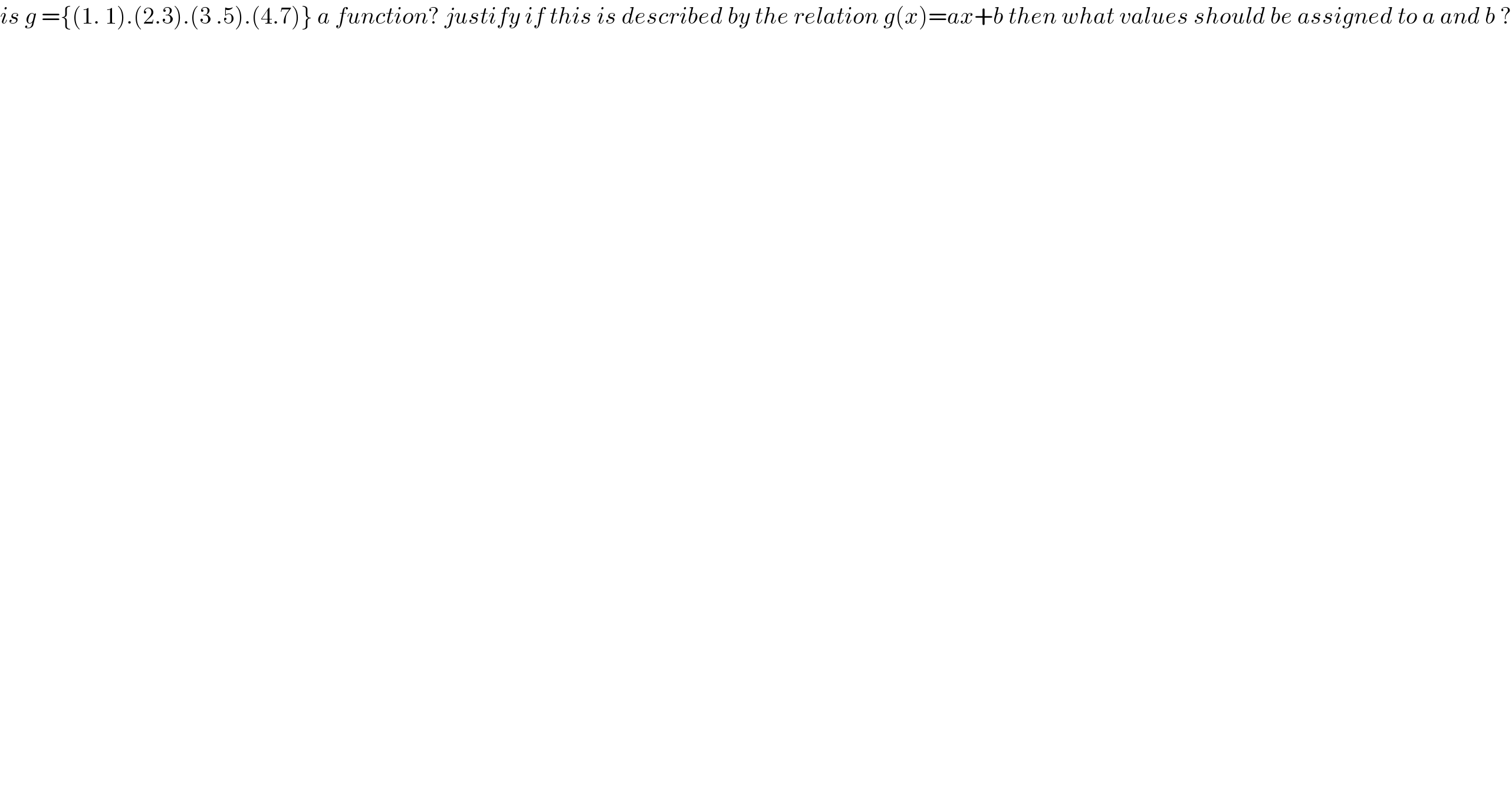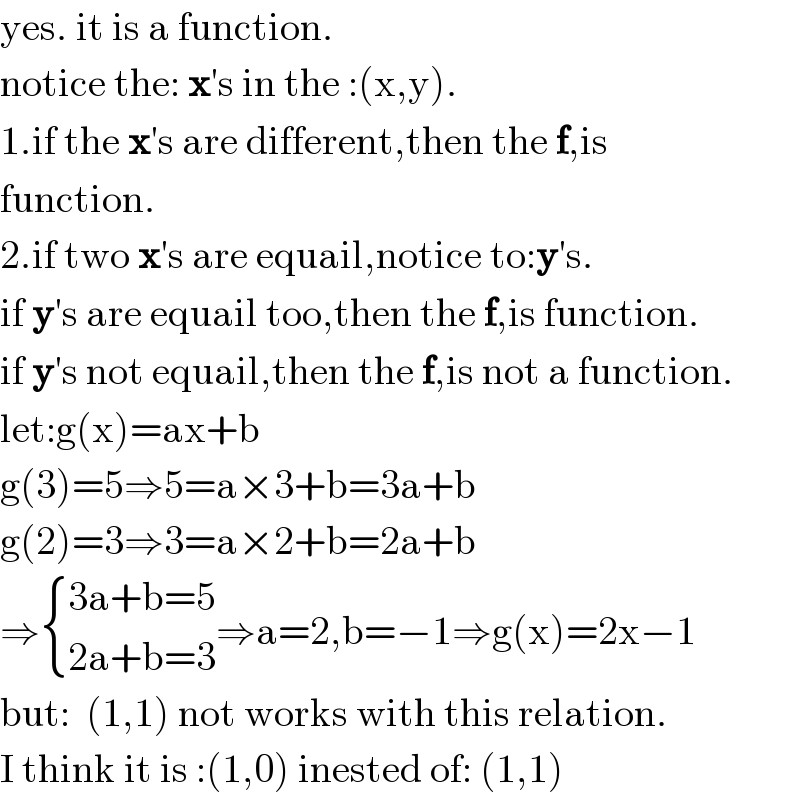
Question and Answers Forum
Previous in Relation and Functions Next in Relation and Functions
Question Number 78685 by berket last updated on 19/Jan/20

Commented by mr W last updated on 19/Jan/20

Answered by behi83417@gmail.com last updated on 19/Jan/20

